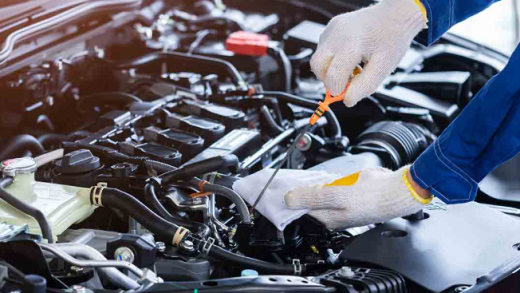In the realm of automotive engineering, the car engine stands as the heart and soul of every vehicle. As we delve into the intricacies of the normal engine in a car, we embark on a journey to explore its components, functionality, and the latest advancements in this ever-evolving field.
1. The Basics: Unraveling the Anatomy of a Normal Car Engine
1.1. Cylinder Block and Pistons:
The cylinder block serves as the foundation, housing the cylinders where the magic happens. Pistons, driven by the combustion process, move up and down within these cylinders, converting fuel into mechanical energy.
1.2. Crankshaft and Connecting Rods:
The crankshaft, connected to the pistons via connecting rods, transforms the linear motion of the pistons into rotational motion. This rotational energy is then transferred to the transmission system.
1.3. Valvetrain and Camshaft:
The valvetrain, consisting of valves, camshafts, and associated components, controls the intake of air-fuel mixture and the expulsion of exhaust gases. The camshaft regulates the opening and closing of valves, synchronizing the engine’s performance.
2. Fuel Delivery: Enhancing Efficiency and Performance
2.1. Fuel Injection Systems:
Modern car engines utilize advanced fuel injection systems, such as direct injection or port fuel injection, to precisely deliver fuel into the combustion chambers. This technology optimizes fuel efficiency, reduces emissions, and enhances overall performance.
2.2. Turbocharging and Supercharging:
To boost power output, engines employ forced induction techniques like turbocharging and supercharging. These systems compress incoming air, increasing the oxygen supply for combustion, resulting in improved engine performance without sacrificing fuel efficiency.
3. Ignition Systems: Igniting the Power Within
3.1. Spark Ignition Systems:
Most normal car engines rely on spark ignition systems, where a spark plug ignites the air-fuel mixture within the combustion chamber. Advancements in ignition technology, such as coil-on-plug systems, ensure efficient combustion and reduced emissions.
3.2. Compression Ignition Systems:
Diesel engines employ compression ignition systems, where the heat generated by compressing the air-fuel mixture ignites it spontaneously. These engines offer higher torque and fuel efficiency, making them ideal for heavy-duty applications.
4. Advancements in Engine Technology: Paving the Way for the Future
4.1. Hybrid Powertrains:
The integration of electric motors and batteries with traditional combustion engines has given rise to hybrid powertrains. These systems optimize fuel consumption, reduce emissions, and provide seamless power delivery, setting the stage for a greener automotive future.
4.2. Downsizing and Lightweight Materials:
Engine downsizing, coupled with the use of lightweight materials like aluminum and carbon fiber, has become a prevalent trend. This approach enhances fuel efficiency without compromising performance, catering to the demands of eco-conscious consumers.
Conclusion:
The normal engine in a car is a marvel of engineering, blending precision, power, and efficiency. From the fundamental components to the latest advancements, understanding the intricacies of this vital automotive component empowers us to appreciate the evolution of automotive technology. As we embrace the future, the engine continues to evolve, propelling us towards a sustainable and exhilarating driving experience.


